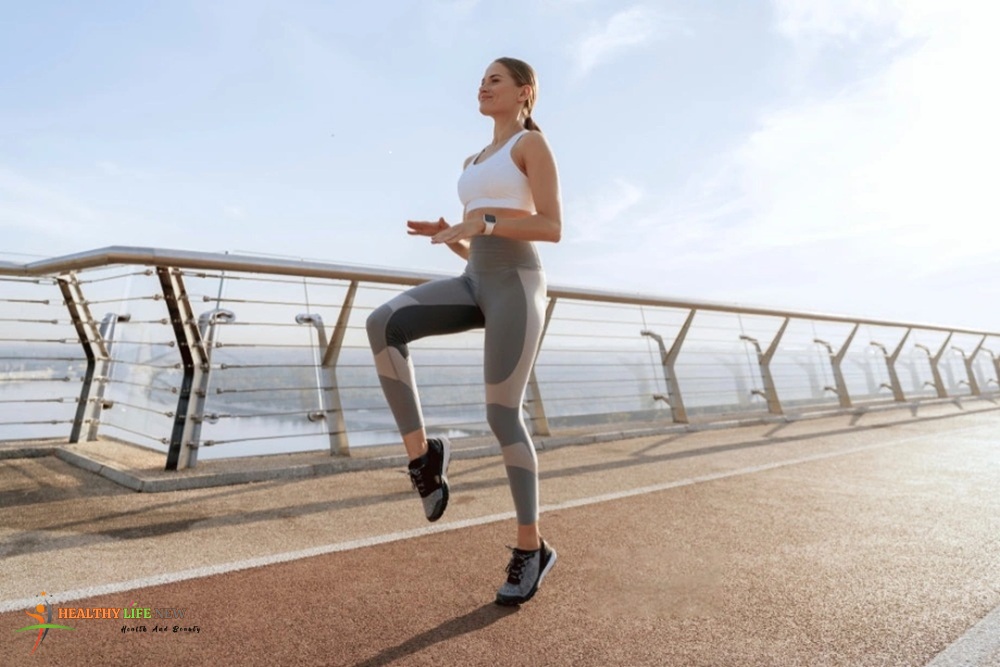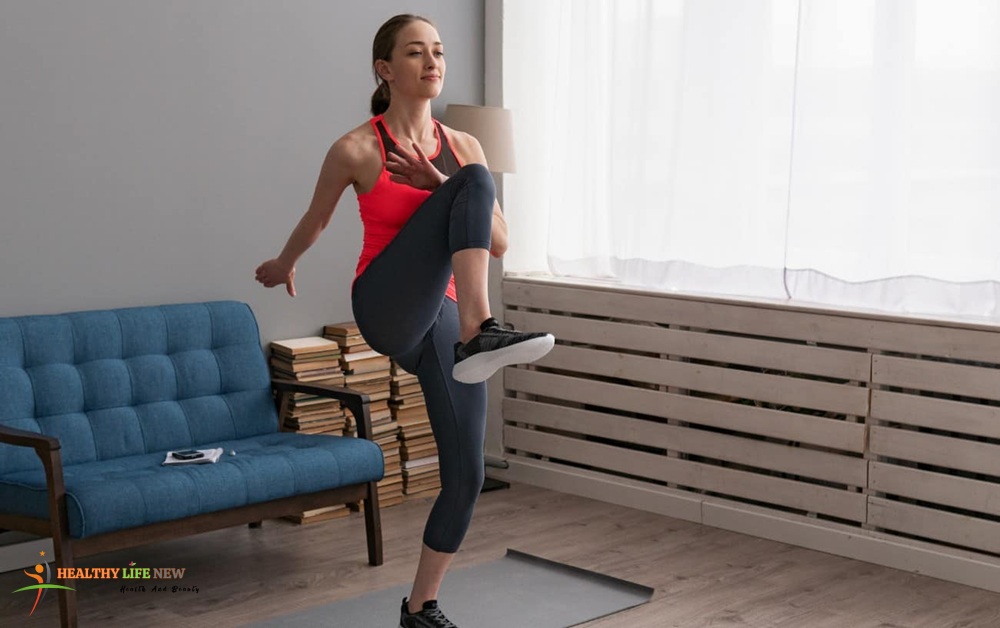Running in place is a simple, accessible exercise that many people overlook when considering fitness routines. With no need for expensive equipment or a large space, it’s an activity anyone can do almost anywhere. But the question remains: does running in place do anything significant for your health and fitness? In this article, we’ll dive deep into the benefits, limitations, and tips for incorporating running in place into your workout regimen.
What Is Running In Place?
Running in place involves mimicking the motion of running while staying stationary. You lift your knees, pump your arms, and engage your core, all without moving forward. This exercise is popular in small spaces, such as apartments, or as a warm-up before other workouts. It’s also a go-to move in high-intensity interval training (HIIT) routines due to its ability to quickly elevate heart rate.
But does running in place really offer meaningful benefits, or is it just a makeshift substitute for outdoor running? Let’s explore its impact on fitness, weight loss, and overall health.
The Benefits Of Running In Place

Running in place may seem basic, but it packs a surprising number of benefits. Here’s why this exercise is worth considering:
1. Cardiovascular Health Improvement
One of the primary benefits of running in place is its ability to boost cardiovascular health. Like traditional running, it increases your heart rate, improving blood circulation and strengthening your heart over time. According to the American Heart Association, regular aerobic exercise can reduce the risk of heart disease, stroke, and high blood pressure.
By engaging in running in place for just 20-30 minutes daily, you can achieve a solid cardio workout. The intensity can be adjusted by speeding up or slowing down, making it suitable for beginners and seasoned athletes alike.
2. Calorie Burning And Weight Loss
If you’re wondering, does running in place do anything for weight loss, the answer is a resounding yes. Running in place is a high-energy exercise that burns calories effectively. The exact number of calories burned depends on factors like body weight, intensity, and duration. On average, a 150-pound person can burn approximately 100-150 calories in 15 minutes of moderate-intensity running in place.
When combined with a balanced diet, running in place can contribute to a calorie deficit, which is essential for weight loss. For those looking to shed pounds without leaving home, this exercise is a convenient option.
3. Muscle Engagement And Toning
Running in place engages multiple muscle groups, including your quadriceps, hamstrings, glutes, calves, and core. The repetitive motion of lifting your knees strengthens your lower body, while arm movements help tone your upper body. Additionally, maintaining proper posture during the exercise activates your core muscles, improving stability and balance.
While it may not build muscle mass as effectively as weightlifting, running in place can enhance muscle endurance and definition, especially in the legs.
4. Convenience And Accessibility
One of the standout advantages of running in place is its accessibility. You don’t need a gym membership, fancy equipment, or a large space. Whether you’re in a small apartment, a hotel room, or even an office, you can perform this exercise with ease. It’s also a great option for people who live in areas with harsh weather conditions, where outdoor running may not always be feasible.
5. Mental Health Benefits
Exercise, including running in place, triggers the release of endorphins, often referred to as “feel-good” hormones. These chemicals help reduce stress, anxiety, and depression while boosting mood. A quick session of running in place can serve as a mental reset during a busy day, helping you feel more energized and focused.
6. Low Impact On Joints
Compared to outdoor running or treadmill running, running in place is generally lower impact. Since you’re not pounding your feet on hard surfaces, there’s less stress on your knees, ankles, and hips. This makes it a safer option for individuals with joint issues or those recovering from injuries, provided they use proper form.
Does Running In Place Do Anything Compared To Outdoor Running?

A common question is how running in place stacks up against traditional outdoor running. While both activities share similarities, there are key differences:
- Calorie Burn: Outdoor running may burn slightly more calories due to factors like wind resistance and varied terrain. However, running in place can match this intensity by incorporating high-knee lifts or faster pacing.
- Muscle Engagement: Outdoor running engages stabilizing muscles more due to uneven surfaces, while running in place focuses on repetitive leg and core movements.
- Mental Stimulation: Running outdoors offers scenery and fresh air, which can enhance mental well-being. Running in place, however, can be done while watching TV or listening to music, making it mentally engaging in a different way.
Ultimately, does running in place do anything comparable to outdoor running? Yes, it can be just as effective for cardiovascular fitness and calorie burning when done with intention and intensity.
How To Maximize The Effectiveness Of Running In Place
To ensure running in place delivers the results you’re after, follow these tips:
1. Use Proper Form
Maintaining good form is crucial to avoid injury and maximize benefits. Keep your back straight, engage your core, and lift your knees to at least hip level. Swing your arms naturally, as you would while running outdoors, to engage your upper body.
2. Incorporate Intervals
To boost calorie burn and cardiovascular benefits, try interval training. Alternate between 30 seconds of high-intensity running in place (fast pace, high knees) and 30 seconds of slower pacing or rest. Repeat for 10-20 minutes for a powerful HIIT workout.
3. Add Variations
To keep things interesting and target different muscles, incorporate variations like:
- High Knees: Lift your knees higher to increase intensity and engage your core.
- Butt Kicks: Kick your heels toward your glutes to work your hamstrings.
- Side-to-Side Hops: Add lateral movements to engage your inner and outer thighs.
4. Track Your Progress
Use a fitness tracker or smartwatch to monitor your heart rate and calories burned during running in place. This can help you stay motivated and adjust your intensity as needed.
5. Pair with Other Exercises
Running in place is most effective when combined with other exercises. Create a balanced workout routine by pairing it with strength training, yoga, or bodyweight exercises like push-ups and squats.
Limitations Of Running In Place

While running in place offers numerous benefits, it’s not without limitations. For one, it may not provide the same mental stimulation as outdoor running, as you’re staying in one spot. Additionally, it may not challenge your muscles as much as running on varied terrain, which engages stabilizing muscles more effectively.
For those training for long-distance running events, running in place may not fully prepare you for the endurance and impact of running outdoors. However, it can still serve as a valuable cross-training tool.
Who Should Try Running In Place?
Running in place is ideal for:
- Beginners looking for a low-impact cardio workout.
- People with limited space or access to outdoor areas.
- Individuals recovering from injuries who need a gentler exercise option.
- Anyone looking to add variety to their fitness routine.
Sample Running In Place Workout Plan
Here’s a simple 20-minute workout plan to get you started:
- Warm-Up (5 minutes): March in place, gradually increasing your pace to a light jog.
- Main Workout (12 minutes):
- 1 minute high knees
- 1 minute moderate-pace running in place
- 1 minute butt kicks
- Repeat 4 times
- Cool Down (3 minutes): Slow march in place, followed by light stretching.
=> Suggestions For You: Does Skipping Burn More Calories Than Running? A Detailed Comparison
So, does running in place do anything? Absolutely! This versatile exercise offers a range of benefits, from improving cardiovascular health and burning calories to toning muscles and boosting mental well-being. While it may not fully replace outdoor running, it’s a convenient, effective, and accessible option for staying active. By incorporating proper form, intervals, and variations, you can make running in place a powerful addition to your fitness routine.
Start small, stay consistent, and watch how this simple exercise can transform your health and energy levels. Whether you’re a beginner or a fitness enthusiast, running in place is a practical way to stay fit without stepping outside.
Hopefully through the above article you have understood more about “Does Running In Place Do Anything? Exploring Its Benefits And Effectiveness”, Follow Healthy Life New to update more useful health information !
